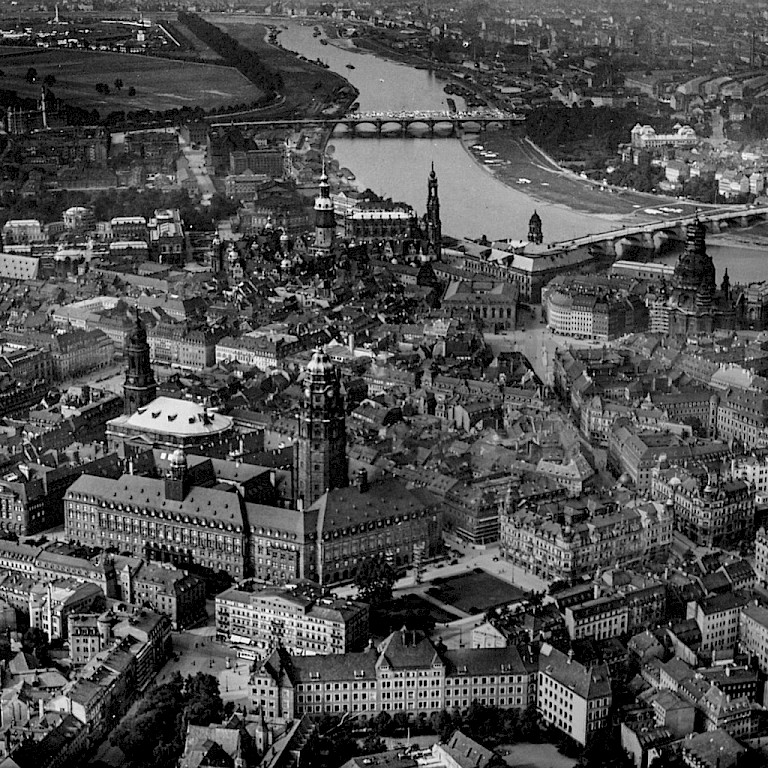
Dresden-Altstadt: Stadtkern von Südosten. 1925
Foto: © SLUB / Deutsche Fotothek / Hahn, Walter
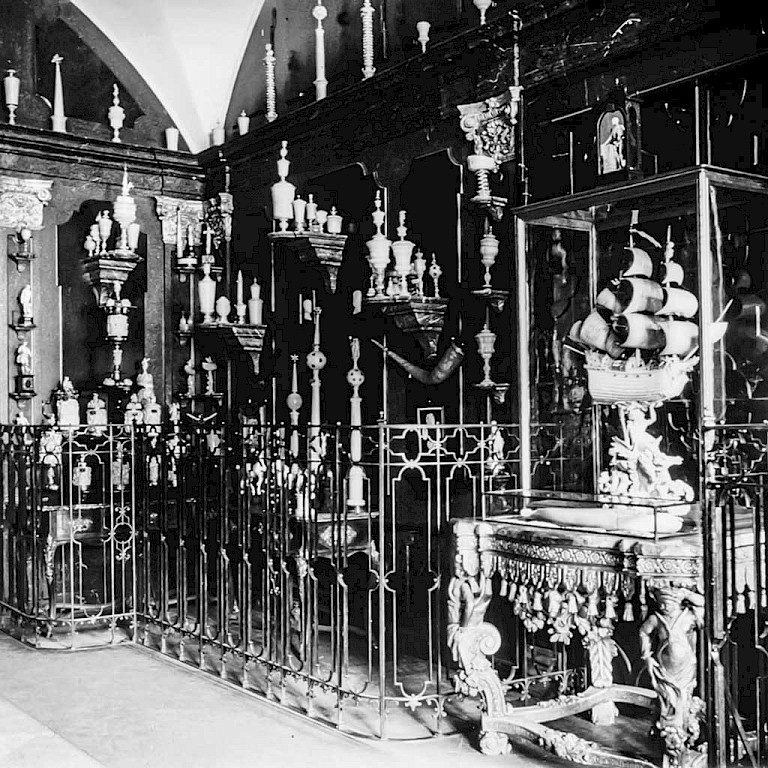
Dresden. Grünes Gewölbe. Blick in den Ausstellungssaal. 1903
Foto: bpk / RMN - Grand Palais / Jean Binot
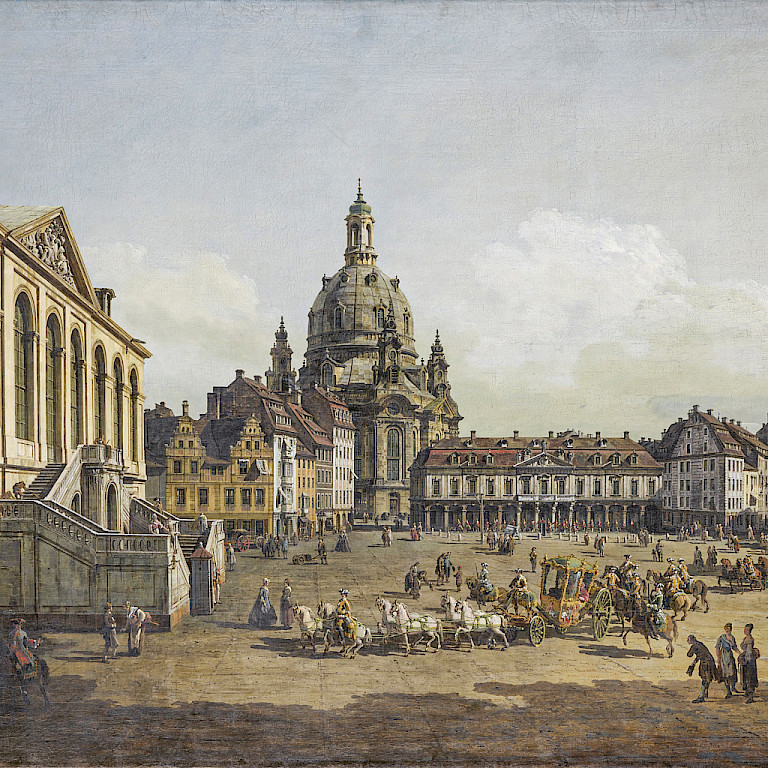
Bernardo Bellotto, gen. Canaletto. Der Neumarkt vom Jüdenhofe aus. um 1748/49
Abbildung: bpk / Staatliche Kunstsammlungen Dresden / Elke Estel / Hans-Peter Klut
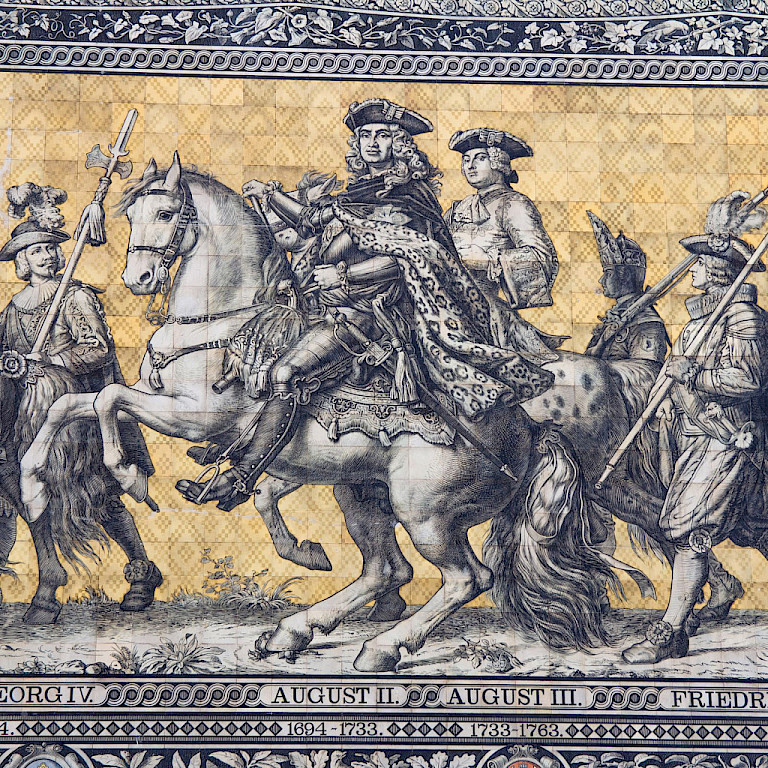
August der Starke im Dresdner Fürstenzug. 2020
Foto: Ö GRAFIK, sk
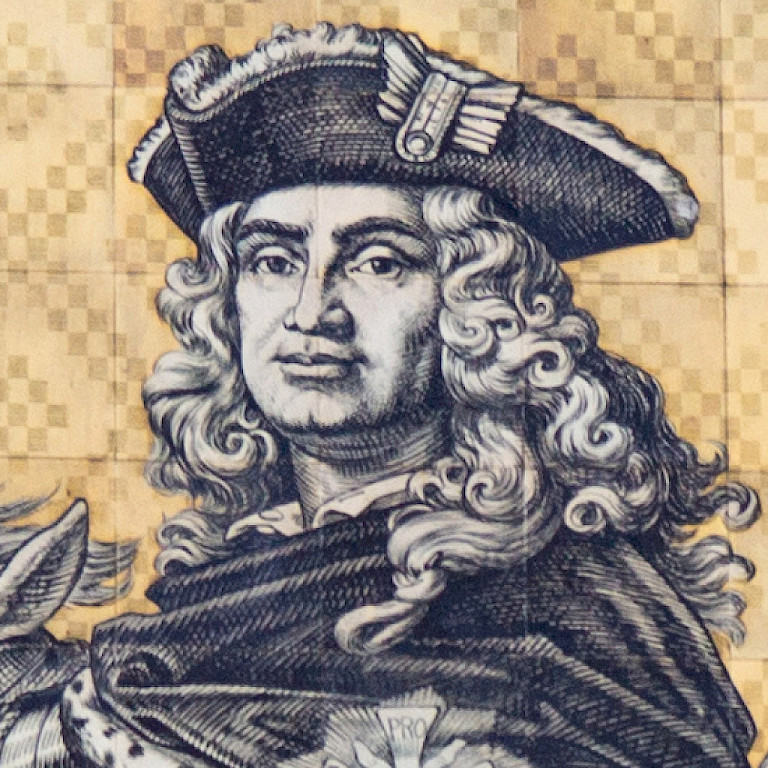
August der Starke im Dresdner Fürstenzug. 2020
Foto: Ö GRAFIK, sk
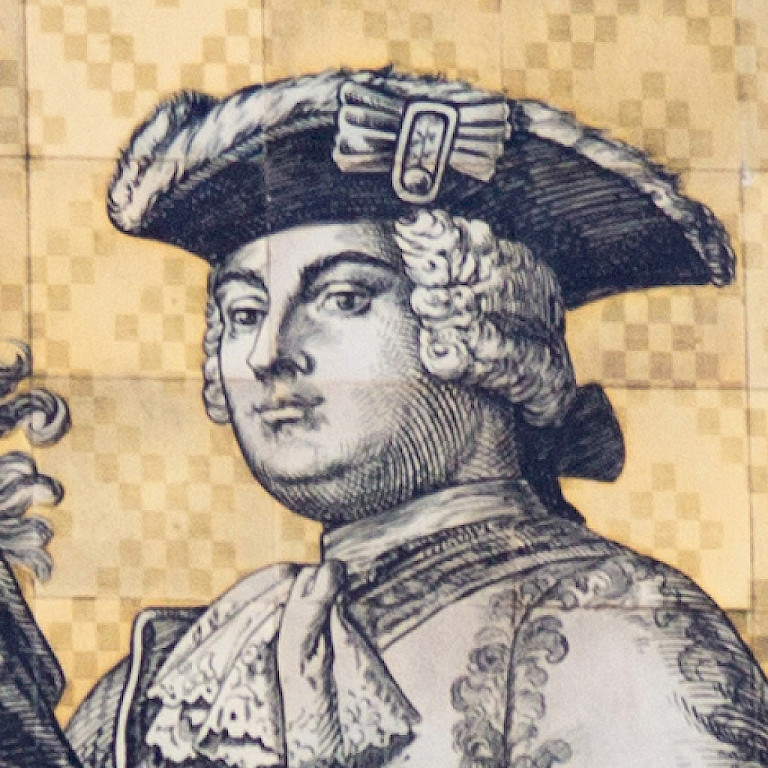
August der III. im Dresdner Fürstenzug. 2020
Foto: Ö GRAFIK, sk
04 MYTHOS BAROCK
Dresden lies in the middle of the picturesque Elbe valley. Not only the beauty of the landscape, but also the mild climate and fertile soils are the reason why people settled in the Elbe valley thousands of years ago. The oldest archaeological evidence of permanent settlement dates back to the Stone Age.
It is probable that a Slavic settlement was established in the 6th century on the northern bank of the Elbe. The name Dresden is of Slavic origin. Villages were built on the left bank of the Elbe and later a market settlement was founded by German merchants. A bridge was built connecting the settlements with a fort securing this important traffic route. This is Dresden’s origin, first documented in 1206.
Dresden has been changing since the 16th century. Dresden used to be an insignificant city until it became the residence of the Wettin rulers. Saxony rose to the ranks of electorate. An elector is entitled to elect the Roman German King.
Eventually Elector Friedrich Augustus the 1st of Saxony, better known as “Augustus the Strong” turned Dresden into one of the most magnificent cities in Europe in the 18th century. He had himself elected as King of Poland and as Augustus the 2nd he ruled over a giant empire, the territory of which you can see here on the map of Europe on the right. The Saxon residence was to exude royal splendour.
Augustus commissioned the construction of the Zwinger as a forecourt for a planned castle and had the old Elbe bridge rebuilt in baroque style. Numerous palaces and hunting lodges date back to his work. Augustus the Strong saw the new Church of Our Lady being built but he did not live to see its completion. His son, also on the Polish throne, continued the intensive promotion of architecture, art and culture.
Dresden changed more than ever before under the two rulers who ruled for almost 70 years in total. The transformation into a magnificent royal residence was accompanied by the artist Bernado Bellotto, named Caneletto. He made an artistic chronicle of Dresden in his paintings. You can see his view of the city from the banks of the river Elbe on the right side of the stairs. The original is in the Dresden Old Masters Picture Gallery.
The cultural development of the city continued into the 19th century. New buildings were constructed in the historicism style, for example the Semper Opera House or the building of the Royal Saxon Academy of Art. They can be seen on a historical aerial photograph of Dresden’s city which was taken around 1930. You can find the photo on the back of the stela. One can see very clearly how densely built the area between the Main Station and the banks of the river Elbe was before it was destroyed.
Dresden grew and developed into a large city. Around the middle of the 19th century about 100,000 people lived in the city, the number of inhabitants quadrupled by the turn of the century. After the First World War, the number rose to more than 600,000 thanks to industrialisation in the 19th and early 20th centuries. Dresden`s transport network also expanded.
The luxury food industry and chemical and electrical engineering companies were important drivers for the development of the city. Optical industry companies settled in and around the city. In 1839 the first cameras were sold and later film cameras and cinema projectors, too. Before the Second World War, Dresden had the reputation of being a “camera city”.
At the entry of the next exhibition room you can watch original film recordings from the beginning of the last century up to the 1930s.